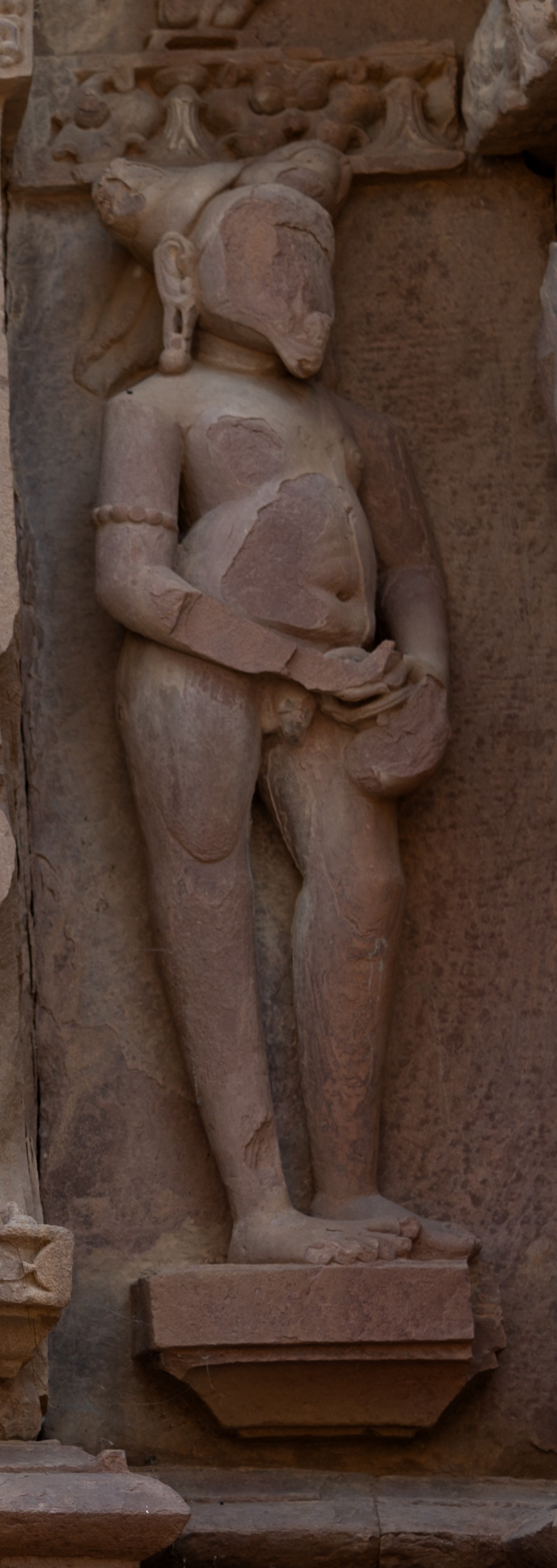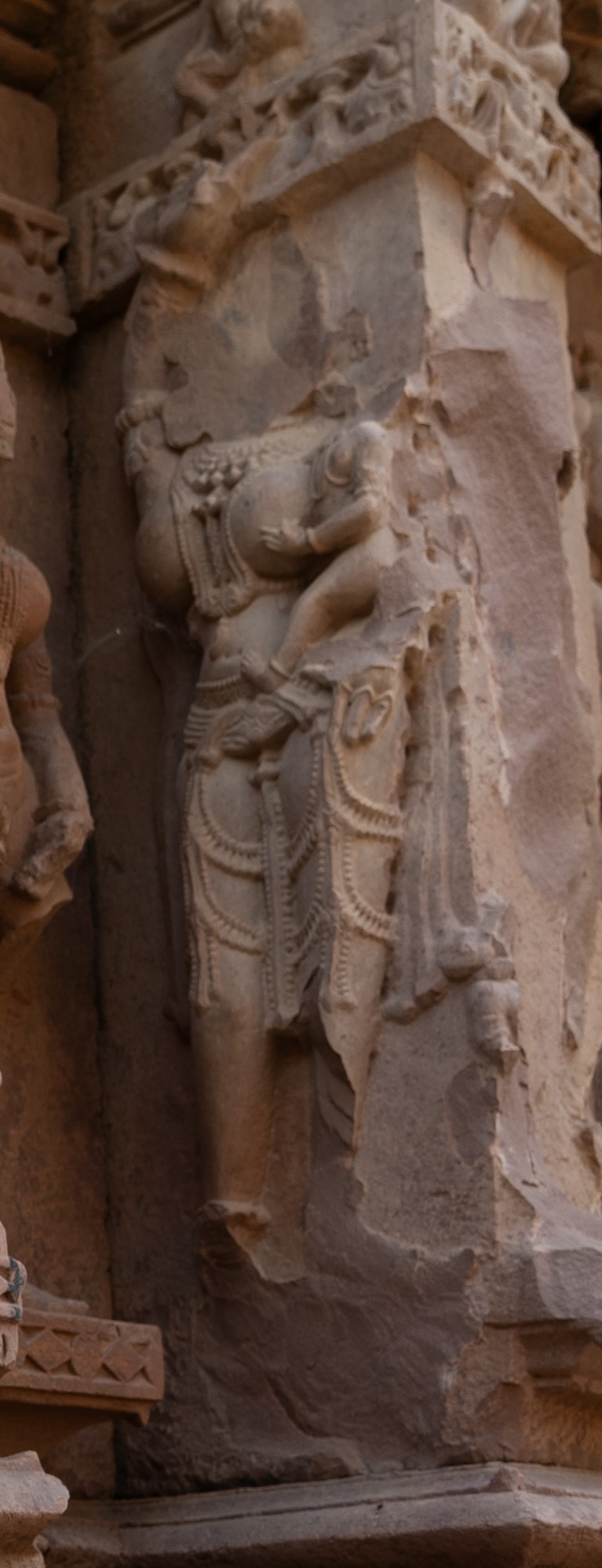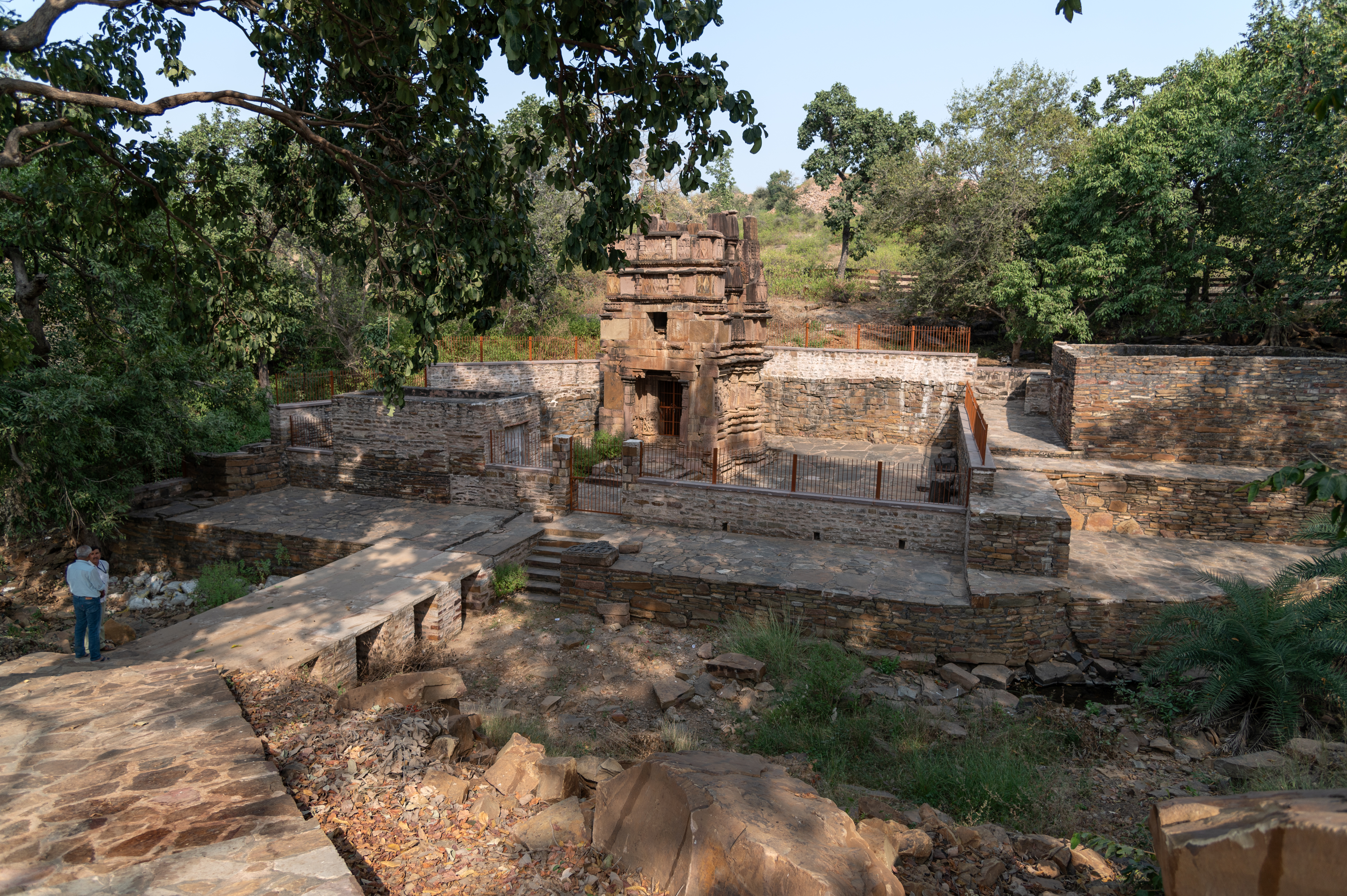The Spiritual and Sensual Art of Kaner-ki-Putli Temple
Kaner-ki-Putli, a Bhumija-style temple dedicated to Shiva, is located in the Bhilwara district of Rajasthan. The temple faces west and consists of a garbhagriha (sanctum sanctorum) and an antarala (vestibule). Earlier, a mandapa (pillared hall) was also attached to the temple, which collapsed completely. Stylistically, the temple dates back to the 12th century CE and is affiliated with the Pashupata Shaivism, a tradition that integrates the elements of ritualistic worship, philosophical inquiry and metaphysical speculation. The temple elegantly presents the Shaivite theme through its sculptural programming.
With its roots in the reverence of Shiva as ‘Pashupati’, the supreme deity and protector of all beings, the formalization of Pashupata Shaivism as a distinct sect occurred during the early centuries of the Common Era, particularly under the influence of Lakulisha, who is regarded as the founder of the Pashupata tradition. The emergence of the Pashupata Sutras, attributed to Lakulisha, provided a systematic framework for the worship of Shiva, emphasizing asceticism, yoga, and ritualistic practices as pathways to spiritual realization. Also known as Srikantha, belonging to a Brahmin family from Gujarat, Lakulisha is a historical figure who was believed to be an incarnation of Shiva. It is believed that Lakulisha visited Ujjain and delivered his first sermon.
The tradition posits (propounds) five fundamental principles (panchasharatattva): Lord Shiva (Pashupati), his consort Shakti (the divine energy), the soul (pashu), the bond (pasha) that ties the soul to worldly existence, and liberation (apashu) from this bond through spiritual practice. It incorporates elements of monism (advaita), positing the essential unity of the individual soul (atman) with the universal consciousness (Brahman), which is identified with Shiva. The tradition also emphasizes the efficacy of ritualistic worship (puja), meditation (dhyana), and yogic practices (sadhana) as means to attain spiritual enlightenment and liberation (moksha). The goal of moksha is attained through an understanding of five essential concepts: the cause, the effect, spiritual practices, religious rituals, and the cessation of suffering. [1]
The tradition gained prominence during the Gupta period (4th to 6th centuries CE) and started flourishing during subsequent centuries, up till the 12th-13th centuries CE, influencing religious practices and temple architecture across various regions of India, including Rajasthan. This is also evident with the consolidation of the philosophy in various texts, including the Pashupata Sutra, Kundinya's Pancharthabhasya, the Vayaviyasamhita of the Shiva Purana, Haradatta's Ganakarika and its commentary Ratnatika by Bhasarvajna, and Madhavacharya's Sarvadarsanasamgraha. [2]
From the lingas (aniconic representation of Shiva) unearthed from several archaeological sites to the temple architecture, Pashupata Shaivism flourished in western India, where the development of several centres of Pashupata Shaivism, including Menal, Harshnath, Bijoliya, Eklingji, among others in Rajasthan can be seen. These centres attracted many Shaiva ascetics from the 8th to 13th centuries CE. Various inscriptions, such as the Harsha inscription from Vikram Samvat (VS) 1030 and the Ekling inscription of VS 1028, mention the names of Pashupata Acharyas. Shaiva ascetics are also depicted on the walls of various temples.
The Kaner-ki-Putli Temple frequently portrays Shaiva ascetics, offering a glimpse into the flourishing of Pashupata Shaivism in this region and providing insight into their lifestyle. The ascetics lead a life of renunciation, dedicating themselves to spiritual practices, meditation and the pursuit of self-realization. Shaiva ascetics are revered for their dedication towards spirituality, their wisdom, and their role as spiritual guides and mentors for those seeking a deeper understanding of Shaivism.
It is noteworthy that at Kaner-ki-Putli, where the images of ascetics are carved, surasundaris (celestial damsels) are also positioned nearby, renowned for their exceptional beauty, grace, and charm. They are often described as enchanting and alluring, captivating both gods and humans alike with their ethereal qualities. They are depicted with delicate features and graceful postures and are adorned in elegant attire and jewellery. These surasundaris are symbols of sensuality and worldly pleasures. According to Silpa Prakash, a temple without female beauty is considered to lack artistic quality and lose its power and efficacy. As a spiritual powerhouse, a temple dispenses divine energy, and it is through the depictions of the surasundaris that this power radiates as grace and beauty, drawing the soul towards the creator. [3]
As the temple architecture is a journey from mundane to supramundane, the Kaner-ki-Putli Temple offers a remarkable illustration that blends two contrasting elements, spiritual and sensuality, on the same walls. The Shaiva ascetics symbolize spirituality, while the surasundaris represent the sensual and feminine aspects. This artistic choice underscores the cultural emphasis on harmonizing these seemingly paradoxical elements. These visual narratives not only illustrate religious devotion but also suggest a broader cultural appreciation for achieving equilibrium between ascetic practices and worldly pleasures.









Footnotes:
[1] Pande. The Udayesvara Temple: Art, Architecture and Philosophy of the Saiva Siddahanta, 103.
[2] Ibid.
[3] Bhattaraka. Silpa Prakasa, 38.
Bibliography:
Pande, Anupa. The Udayesvara Temple: Art, Architecture and Philosophy of the Saiva Siddahanta. New Delhi: Aryan Books International, 2018.
Bhattaraka, Ramacandra Mahapatra Kaula. Silpa Prakasa. Edited by B. Baumer, R. P. Das, S. Das. Translated by A. Boner, and S. R. Sarma. New Delhi: Indra Gandhi National Centre for the Arts; Motilal Banarsidass Publishers, 2005.
